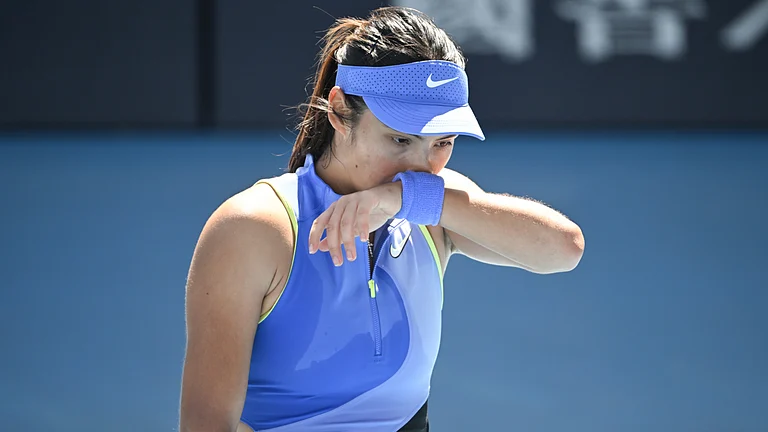India On Their Minds: 8 Women 8 Ideas of India by Ritu Menon
Women Unlimited
Rs 399
Eight very different women with one overarching point of commonality — the subcontinent pre- and post-1947. The second unifying factor is that they have all been published at one time or another by Ritu Menon, which is why she is writing about them in this admittedly slim volume. They are women who were affected by Partition, by the freedom struggle, and, in some cases, found themselves unable to decide which side of the border they belonged to or whether they were violent or non-violent. All of them saw the birth pangs of the nation and, though not exactly Midnight’s Children, put down their observations of the run up and the aftermath in their different styles of writing.
In his description of the nation as an “ancient palimpsest” on which succeeding rulers and subjects have inscribed their ideals without erasing what had previously been asserted, Jawaharlal Nehru wrote that the idea of India was social heterogeneity acknowledged by history. The events of 1947 leading up to Independence were based on the concept of a kind of Utopia rising out of an old civilisation, supported by an equal power democracy and bound together by a common past. The fact that the shared past fell to pieces at Partition in a spontaneous combustion of hate was something that very few had foreseen and left the sensitive uneasy and unconfident.
It is this watershed moment and its influence on women that Menon discusses — it appeared in the work of most of the writers except Nayantara Sahgal. Sahgal, who is still alive today, has the longest list of publications and perhaps the closest relationship to Indian Independence in a very literal way, since she was Nehru’s niece focussed on the ideal India rising like a phoenix from the ashes. For her, it was a rude awakening from the idealistic nation of her dreams to the Emergency created by her cousin Indira Gandhi and then to today’s world where plurality appears to lie in shard.
Qurratulain Hyder presents her very different idea of India, not Sahgal’s dream of Utopia but her assessment of thousands of years of history swooping out to make magisterial observations. She moved to Pakistan with her family “in the wake of burning trains of corpses going into and out of both countries, as Muslims moved to Pakistan and Hindus to India” — something that she described in her novel Aag ka Darya (River of Fire) and the result was a furore in Pakistan that eventually led to her moving to India.
Attia Hossain, finding the own feudal way of life she was used to vanishing and refusing to accept Pakistan, moved to London to live on her own and make a name for herself with her novel Sunlight on a Broken Column, a memoir of a world that was. She was one of the writers who did not know how to react to a divided subcontinent and chose to move to England — ironically the country of those 1947 had fought to evict.
Ismat Chugtai created the same kind of buzz as Hyder did with her story Lihaf — though her story Garam Hawa which was the basis of MS Sathyu’s film made almost as much impact. In her works, language serves as both a vehicle for expression and a source of abstract truth; the abstraction behind her idea of India. Chugtai was a professional believing that illiteracy was behind the subjugation of women — as a result she took up education as a career rather than being a full time novelist in her determination to make a difference.
Rashid Jahan is a name many may not have heard, simply because she wrote very sparsely and Aangare was banned by the British when it appeared, who wrote about empowering women in a patriarchal society. She was an active member of the CPI which began to flourish in India post the publicisation of Marx and Lenin’s theories and a medical professional. She and Lakshmi Sahgal form one kind of group, both practicing medicine and both militant in their theories — though Sahgal took a step further and joined the INA and began the Rani Jhansi Regiment for Subhas Bose.
Saraladevi Choudhurani took up Bankimchandra’s Ananda Math as inspiration and began the training of youths to form a Hindu ‘army’ that would fight for Independence, writing about it in her Bengali autobiography. She did not see 1947, passing away before the realisation of her dream.
Then there was Kamalaben Patel who worked with Gandhi and then gradually stood apart and alone, saddened by everything she saw as part of the Recovery Programme where she helped rescue abducted women who had been forcibly converted and married to their abductors.The experience revolted her and ultimately she withdrew from activism and chose to live simply on her own in silence — barring her occasional writings.
Centring on these different concepts of India, Menon highlights the uncertainty that prevailed and how it was also reflected in the works of other writers at the time opening up the canvas. The book also talks about current border issues and the pageantry of Beating the Retreat at Wagah which draws crowds of tourists to the Border and in its own way mirrors a common heritage. Familiarity with the works of these eight women is useful for a better understanding of the theory, though Menon puts her analysis simply and lucidly so that readers will also have a chance to compare it with today’s political scenario and how it still affects pluralism and women’s empowerment.


























